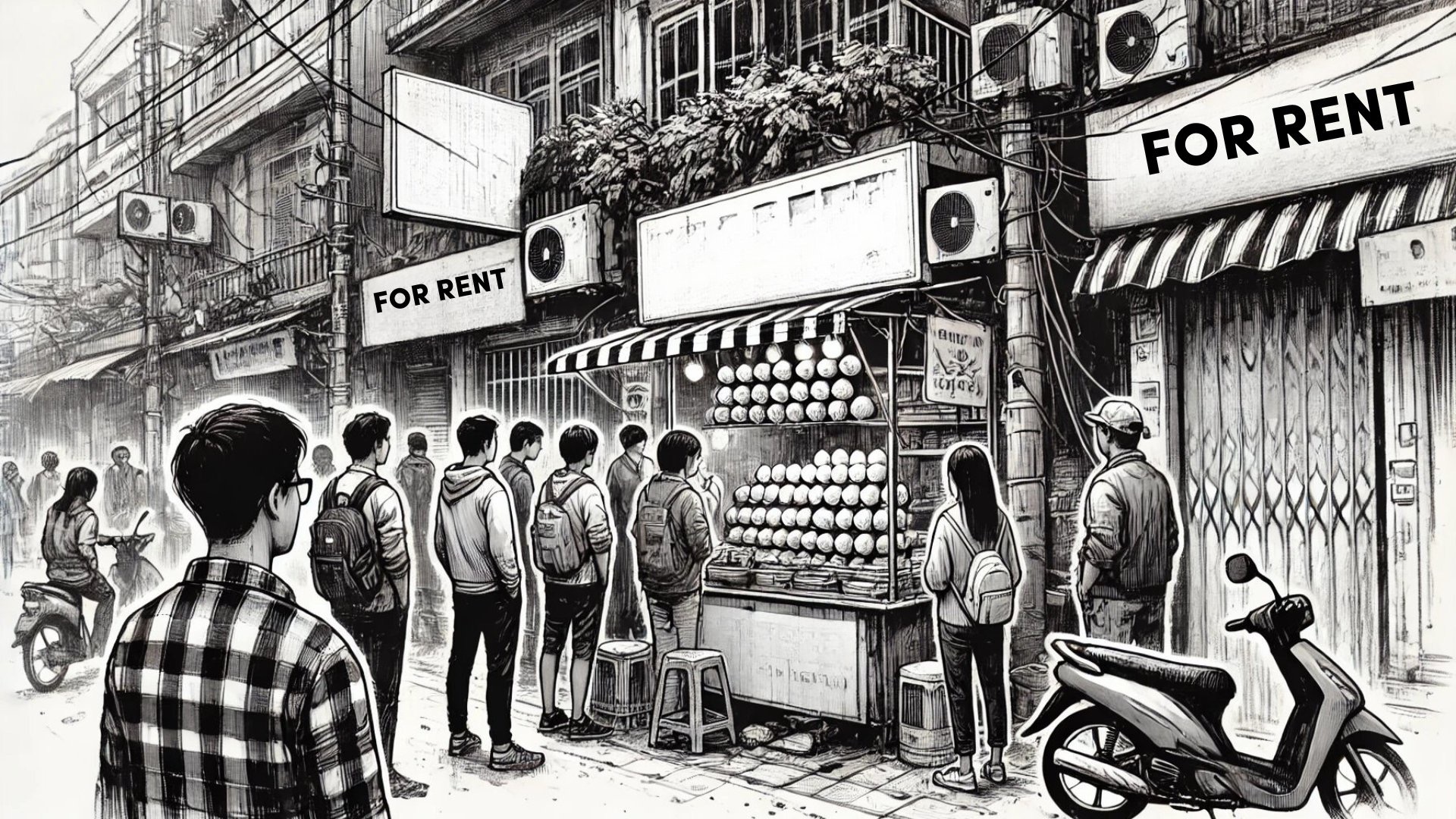
The Boom and Bust of Street Food Trends
My memory of the Korean coin-shaped cheesecake craze in Vietnam is crystal clear. Walking past student-heavy areas near major universities in Hanoi, the capital city of Vietnam, I saw a lot of large, striking ads everywhere I looked. But as soon as the trend ended, these streets went quiet again, with signs reading "FOR RENT" signs replacing the flashy banners. As the capital of Vietnam, Hanoi is always quick to spot trends and sets the tone for the rest of the country.
The Economic Impact
In recent years, social media trends have been hard to avoid. By mid-2024, the street food scene for young people in Vietnam has exploded with new and exciting creations. Let me tell you about a few: dragon fruit tea, soursop tea, hand-squeezed lemon tea, salted cream coffee, dragon fruit noodles, and Chinese grilled sausage on hot rocks.
But the Korean coin-shaped cake stood out the most. People were lining up for hours just to get their hands on one! Yet, after just a few months, the hype died down, and many small shops were forced to close due to the lack of customers. It’s crazy how fast these trends can come and go!
The coin-shaped cake trend is a perfect illustration of the boom and bust cycle of street food trends. Many small shops opened in the hope of capitalizing on this fleeting opportunity. But when the trend faded, many couldn’t adapt or recoup their investment, leading to bankruptcy and financial hardships for families.
The F&B community was flooded with business owners who quickly posted their cooking equipment and cake machines for sale due to a scarcity of customers. Many who hoped to make a quick buck found themselves in debt after this risky venture. This creates an unhealthy business trend that can lead to food safety issues or legal compliance problems. When I tried the famous coin-shaped cake, it looked interesting, but the taste wasn’t impressive. When I asked high school students, I often heard, “It doesn’t taste outstanding enough to make me buy it often, it's just worth a try.” On a more negative note, many young people commented online, “Should’ve spent the money on Pho instead of this bland cake.”
The price of a coin-shaped cake varied between VND30,000 to VND40,000 depending on the location, which is comparable to the price of a serving of rice, Pho, or noodles in Hanoi.
A Repeating Pattern
This has happened before, and there's no reason to think it won't be repeated. The proliferation of bubble tea shops around 2016 is another example. This trend really took off in Vietnam when major brands from Taiwan and China started offering franchises. I still clearly recall counting roughly 30 different bubble tea brands while driving straight down Pham Ngoc Thach Street! It was like a bubble tea paradise – or maybe an overabundance of it!
Fast forward to today, and we're seeing a similar story unfold with the budget ice cream. It seems like everyone wanted a piece of the action, but now, many franchise owners are taking to Facebook to voice their woes. They’re complaining about the financial losses and wondering what went wrong.
It's déjà vu all over again, folks! Just like the bubble tea craze, the ice cream and coin-shaped cake trends seemed like a sweet deal, but not everyone is enjoying the profits they hoped for. It’s a good reminder that jumping on the latest bandwagon can be a double-edged sword – delicious at first, but sometimes hard to swallow in the long run.
The Influence of Trends
As a foodie, I'm always tempted to try these top-trending foods, but the sight of those long lines quickly drains my patience and motivation. These trends are a clear sign of modern consumerism. It's not just about shopping; it’s about how we are manipulated and influenced by marketing campaigns, advertising and social media. . Our feeds are constantly bombarded with images of the latest must-try treats, making us feel like we’re missing out if we don’t join in.
And let's not forget about the FOMO (Fear of Missing Out) in the world of consumer services – it’s massive. Everyone wants to be in the know, to try the newest things, and to flaunt their experiences. This creates a powerful psychological drive to keep up with trends, often leading us to spend money and time on fleeting fads. The pressure to conform and the desire to be part of the latest craze can be overwhelming, making it hard to resist the allure of what’s trending. After all, it's not just about enjoying something new; it's about being seen as part of the in-crowd. This cycle of trend-chasing reveals a lot about our society's values and the lengths to which we go to fit in and stay relevant.
The Bright Side of Trends
However, it's undeniable that trends also have positive aspects, such as stimulating creativity and competition in the market. The important thing is that we need to be selective and think carefully before deciding to follow a trend. Be a wise consumer who not only spends money judiciously but also contributes to market protection and personal economic stability. Rather than mindlessly following the herd, seek out values that truly bring long-term and sustainable benefits.



